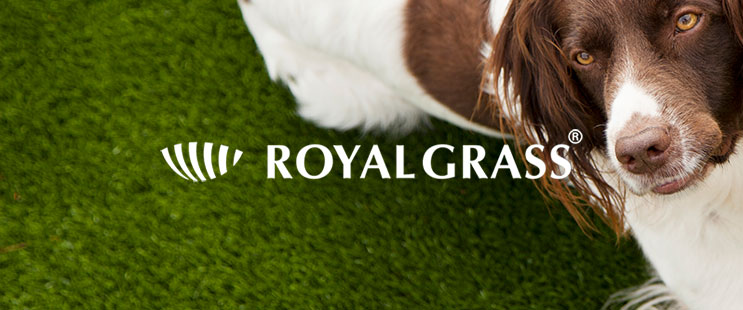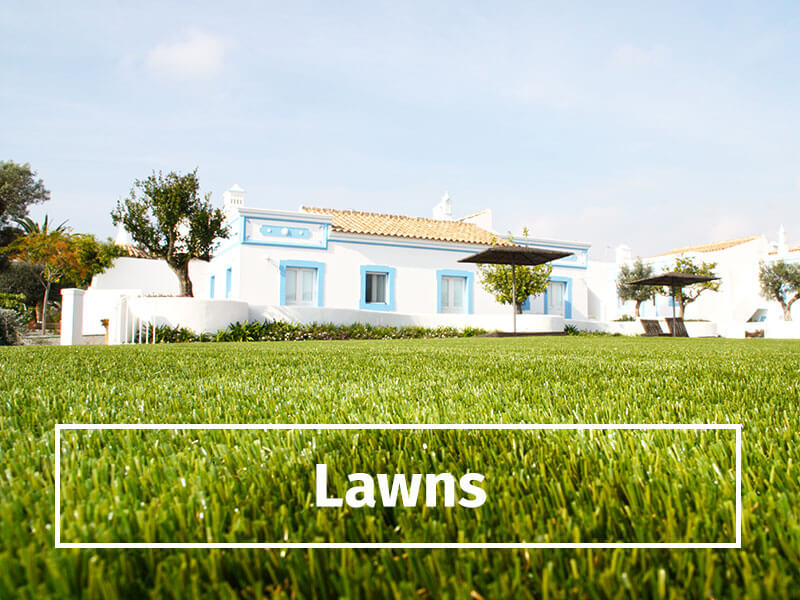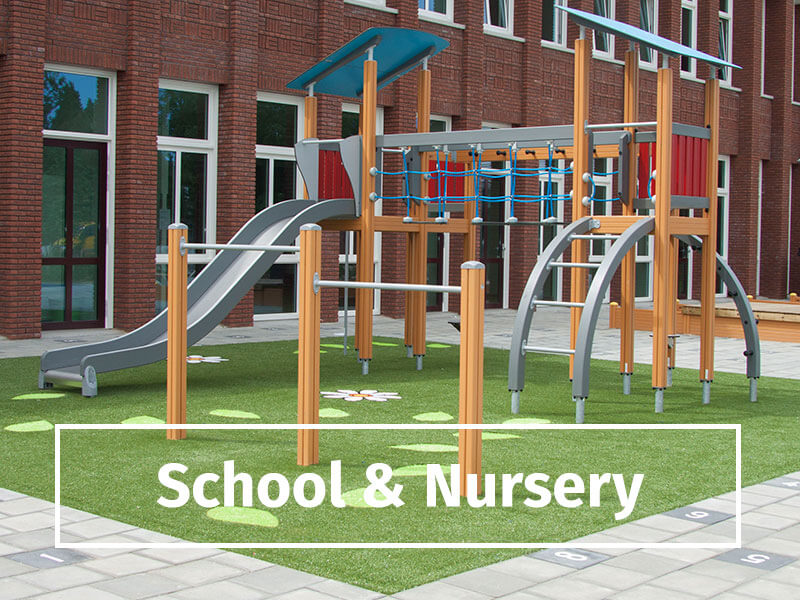Artificial Grass Maintenance
So your artificial grass has been installed beautifully. Now it’s time to enjoy it. To make sure you can keep on enjoying it, we’ll give you a list of maintenance tips. These tips are to ensure your artificial lawn will stay beautiful for an extended period of time.
Why maintain artificial grass?
Even artificial grass needs some maintenance but don’t worry, very little effort is required. Perhaps there’s a tree in your garden. Every autumn, its leaves will fall. Should you remove these when they fall on the grass? And what if the dog pees on the grass? And how can you get the fibres standing upright again when they’ve flattened after intensive use? These are just a couple of maintenance questions answered on this page.
Should you have a question not answered here, please contact Royal Grass® or your turf installation company.


Remove leaves and twigs from the grass
Leaves on your lawn do not harm your artificial grass at all. The only issue might be leaves piling up and hampering water drainage. Also, leaves and twigs may have seeds. If you leave the leaves and twigs on your grass, those seeds may sprout. Fortunately, weeds can easily be removed so sprouting seeds aren’t that big a deal either. But when your lawn is clean, you’ll prevent the seeds from sprouting.
How do you remove leaves and twigs? Simply use a stiff brush, rake or leaf-blower. You can even clean artificial grass with a vacuum cleaner (if there is no sand infill applied to your lawn).

Remove weeds
Weeds are less of a problem for artificial grass than they are for natural grass. But occasionally you still might get some weeds. Seeds brought by the wind, or from leaves or twigs can nest in the lawn and start sprouting. This may occur especially in the crevices between the lawn and the terrace or pavement.
How can you remove weeds? Usually, you can remove the weeds by hand; even with their roots. Crusher dust is spread underneath the artificial grass. This is very loose sand in which the weeds can’t root. If you’re not able to remove the weeds by hand or if you’ve got quite a lot of them, you may want to use a herbicide. Please note that there are many types of herbicide available. Our advice: use a type that is eco-friendly. Then you won’t harm the environment or damage the soil life in your garden. When in doubt: ask for advice in the store of call your installation company.

Remove moss and algae
There is a very small chance that moss or algae will grow on your artificial grass. However, we still want to discuss this. These days, moss and algae
are still sometimes controlled with bleach. Our advice: don’t! Bleach isn’t only harmful for the environment, it also damages the colour and quality of our artificial grass.
How do you remove moss and algae? If you’re not able to remove them by hand, please use an eco-friendly pesticide. There are plenty of those available. Apply this to the moss, leave it for a day and you’ll be able to brush the moss effortlessly clean with a stiff brush. Please read the instructions carefully before use. And if you have any questions: ask your sales representative or call the installation company of your artificial grass.


Remove urine and excrement
What if your pet really needed to go and used your lawn as a public toilet? Is that a problem? No. At least, not for your lawn. That is, when you clean the grass as soon as possible. Excrement that isn’t removed can become mouldy and urine can start to smell, especially during the warmer months of the year.
How do you clean the artificial lawn? You can remove excrement the same way you would do in a public space: with a bag or tub. Please don’t forget to rinse the grass with some water when you’ve removed the excrement. Then you can be absolutely certain that the grass is completely clean. The same applies to urine: thoroughly rinse the spot with water. Don’t worry. The grass won’t discolour. To neutralise the odour, you can use a solution of white vinegar and lukewarm water. You can buy an eco-friendly product from any DIY shop.

Brush your lawn occasionally
You have chosen Royal Grass® artificial grass. A quality unlike any other when it comes to resilience. This means the fibres (the blades of grass) will stand upright for a longer time than those of any other artificial grass brand. But after a while you’ll still notice the fibres aren’t as upright anymore and have ‘flattened’ somewhat. Especially when your lawn is used intensively.
How can you revitalise the artificial lawn? That’s easy: just brush the artificial grass occasionally with a stiff brush. It’s best to do this with an outside temperature above 10°C and in the opposite direction of the blades of grass. This way you’ll revitalise the grass and its original vitality will be returned. How often you need to brush the grass depends on the quality of artificial grass you’ve chosen and the intensity of use. Decorative artificial grass that’s being used as playing grass will need to be brushed more often than grass that was specifically designed as playing grass. Playing grass is more resilient and will recover a lot quicker. Of course, there’s only so much brushing you can do. Depending on the quality of grass and how intensively it is being used, the effect will decline over time.

Avoid contact with paint, glue and fire
Artificial grass is a synthetic product. And as you know: when synthetics come in contact with acids, paint, glue or fire, the product will be damaged. This is also the case with artificial grass. It will discolour, shrivel – or when in contact with fire – get scorched.
Can this damage be repaired? Yes. We recommend you to keep some scraps of artificial grass left over from your installation. If your lawn gets damaged, you can use those leftovers to repair your lawn (or have it repaired). You should however keep in mind that this patch will probably always be identifiable as such.


Caution with BBQs and heavy items
Try to avoid hot items like BBQ ashes and cigarettes from touching your artificial lawn. Such intense heat can cause the plastic grass to melt. If this happens, a repair is possible but the affected area may be slightly visible.
Heavy items such as large tables and inflatable swimming pools can cause the fibres of the artificial grass carpet to flatten (as you would expect, similar to a traditional indoor carpet). To avoid the fibres remaining permanently flat underneath such heavy items, it is good to occasionally brush the lawn. This will make the blades of artificial grass stand upright again. Always brush against the natural pile direction of your lawn.

Check your artificial grass regularly
As discussed on this page, your artificial lawn needs some attention in order to keep it looking beautiful. In addition to these tips, it is good to check your artificial grass regularly:
Are the fibres still standing upright the way they should? Does the grass still have its beautiful, uniform appearance? Are there any patches that have been damaged or discoloured for whatever reason? Is there any mud or bird droppings on the artificial lawn that need to be cleaned? The maintenance tips on this page explain what to do in these circumstances but if you have any further questions, please contact us.








